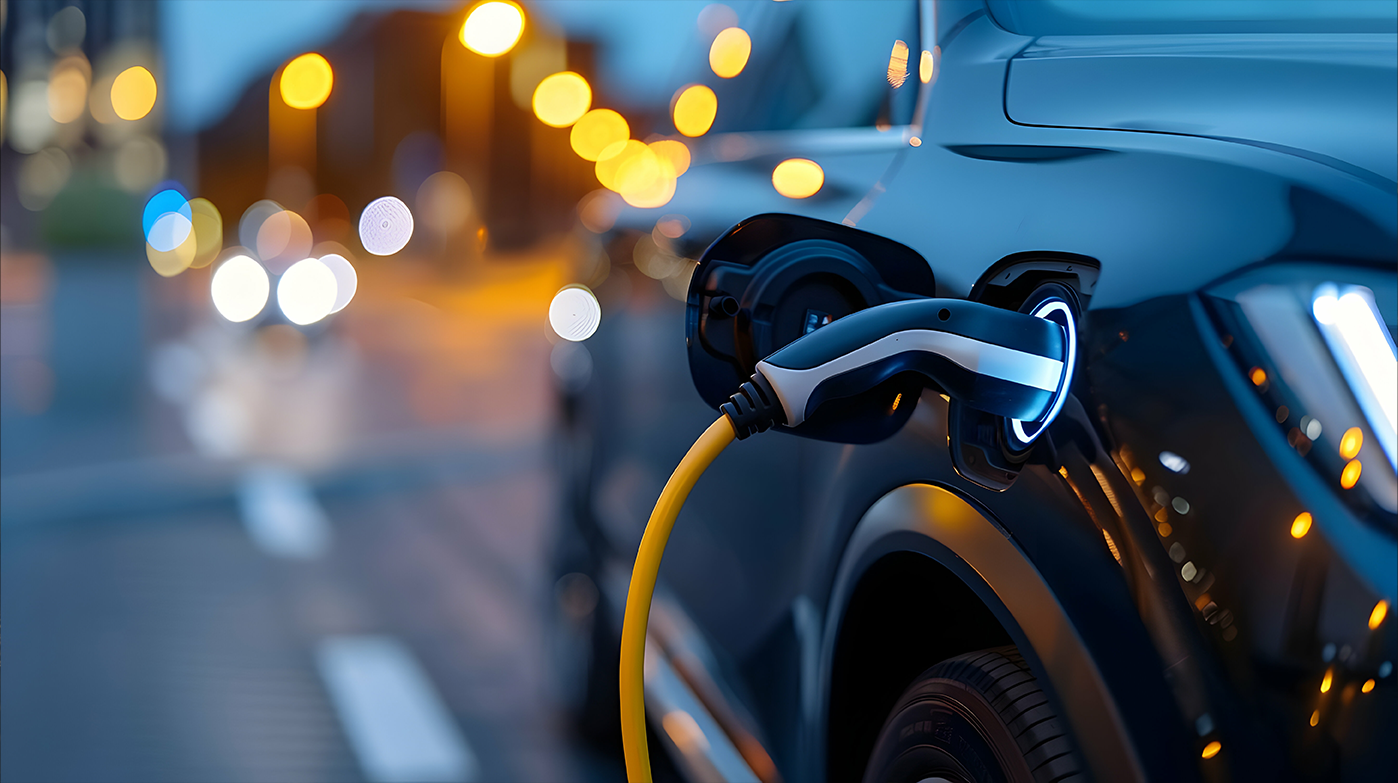
(created by Richard Leitner on 11/23/2022 with support from Christoph Schmidtbauer and others)
A – How to Scale Digital Charging
The latest and very relevant topic is scaling electromobility and the simplest answer is: with the right team.
Sounds simple, but at the end of the day, companies can only scale if areas of responsibility are divided and Operations, Sales, IT, Finance, etc. pursue and orchestrate their goals in a focused way. Scaling means outgrowing the startup phase and adding structure to a company.
It is important to differentiate by business model, i.e., e-Mobility Service Provider (eMSP) or Charge Point Operator (CPO). Even though the business models are different, there are many hybrids in the market.
B – Effectiveness versus efficiency and the issue of prioritization
Startups need to be effective and efficient, they need to deliver results, a product, acquire a first customer and have limited funds to work with. All companies have limited funds and resources in some form, but in the scaling phase, above all, effectiveness in building structures is imperative.
Scaling also means rapidly growing sales and, as a result, a wide range of new customer requirements that come to a company with increasing urgency and need to be prioritized.
These demands stem from real end-customer needs, i.e., drivers of electric vehicles or automotive corporations demanding access and billing services from the MSP, and the MSP demanding the ability to charge without error from the CPO.
The difference in the scaling phase now is that high-volume business is emerging. From here on, process errors are much harder to tolerate, due to potentially expensive impacts and high follow-up costs. Minor unimportant requirements during MVP and startup phase suddenly become urgent. What is needed is an open error culture that can quickly discover and solve errors before it snowballs.
Scaling a company thus also has to do with prioritization, that is, installing a process, at the level of individual demands, but also at the level of company projects. This is a major aspect of corporate development in its own right, which is very important, but cannot be sufficiently addressed here.
C – Set-up Operations & Customer Service
Scaling means revenue growth, and if charging power is charged, then customer issues must be addressed. However, scaling also means targeting customer groups that are not digital and technology pioneers. These are less likely to accept a flawed and inadequate customer journey.
As a charge point operator, it is the charging infrastructure that has to be operated. It is not only about the actual availability of this charging infrastructure, but also the communication of the availability to perform booking and reservation. In the event of a malfunction, it is important to quickly determine the fault, investigate the options for troubleshooting and, if necessary, take action by restarting, updating the software or another intervention that avoids, if possible, the need to deploy or repair the charging station on site. Remote serviceability & IoT enablement are essential here, but often it basically fails just to be able to determine the exact fault. One step before that is just as important, which is asset management, by neatly recording and managing all hardware components of a charging park.
The MSP has more of an issue with optimizing access to charging. Cars drive across the city border and thus charge at a foreign CPO, across the state border and need to be charged there as well, billed correctly and paid for.
It’s hard to argue that any specific process would be important, basically all that can be stated is that data-driven decision making is necessary to identify the next investment needed. The goal is to ensure and optimize charging station operations and charging access.
If an MSP is invoicing incorrectly, then it has little choice but to correct the billing and often create customer loyalty measures in the form of credit notes and the like for existing transactions. If the mapping of manual payments to open items does not work, then the MSP does not immediately jeopardize the value chain. The decisive factor is always the impact, which thus depends on error rates and customer satisfaction, legal obligations, etc. It is important not to think of this as being too simple, because there are also error cases that start with the car manufacturer and end with the CPO and have to be solved together. The decisive factor is a process of quick and focused identification and elimination of the defect.
D – Data-driven decision making
Both processes, so both MSP and CPO business is IT based, the only difference is that CPO business is a bit more IoT driven because it runs the charging hardware. With regards to the MSP, if we see the vehicle and fleet as a component, it is also IoT driven, however, most often we see automotive companies and their vehicles as a customer of the MSP.
We would like to emphasize the aspect that the company has to manage to define, generate, prepare and present the data for decision making. The challenge here is usually to define relevant KPIs that are meaningful and also to generate reliable data for this process. It should not be the case that the BI cockpit shows a certain trend in sales and the number of charging processes, but this trend cannot be explained because a detailed breakdown is missing. For operations, it is crucial to drive the KPIs and the IoT capability to the point where clear “insights” can be generated later in a high-load operation, even if the data can no longer be meaningfully evaluated in Excel.
The most challenging hurdle here is certainly standardization, especially in hardware, because it is simply too costly to enable charging hardware in the field to deliver data after the initial rollout. Cars and vehicles are just as resistant to change, and bringing older generations up to new data standards is a costly and unpopular undertaking.
The crucial question is: What needs to be implemented today so that I can get the necessary data tomorrow to make decisions based on it? Very high advanced expertise is necessary for these kind of decisions.
To simplify, reporting the value chain is as central to the CPO as it is to the MSP and without it, would be flying blind. Importantly, a time series of sales data and charging transactions is of little use to operations, because only the link to geography, software status, market partners and to malfunctions or rollouts & downtimes, etc. generates insight that helps to decide and initiate the right measures.
E – The sales reporting
Supporting decision making in sales, i.e., scaling in sales has always been one of the crucial points for growth. Determining that a certain change in the customer journey or fixing a certain bottleneck will lead to a certain change in revenue or margin is central. Basically, as always, it comes down to knowing and understanding the customer and their needs.
Here it is worth comparing Tesla, where the vehicle and the charging are vertically integrated, which gives Tesla a far better view of the customer than its competitors. However, Tesla also gets the situation with less customer transparency due to opening charging stations up to other non-Tesla customers.
CPOs and MSPs only ever see snippets of the complete customer journey and also only the corresponding data. The CPO has to live with the fact that other charging stations are built next to his charging stations, which can be used by the same end customer. The MSP sells the charging power of several CPOs and also does not see completely what happens before the customer starts his routing, depending on how deeply the MSP is involved in the routing.
So, from a company’s point of view, the key issue is to evaluate the different channels and in a fast growing business, CPO and MSP especially with the global players, have more than enough to catch up with reporting and explaining exactly the cause and effect from the data. Just translating political crises, war or pandemics and the like into changes in the data is a challenge; forecasting even more difficult. Identifying in the data exactly which promotion, price change, or change in the customer journey has led to which change in the business is more akin to reading tea leaves, unless you can prove the origin exactly on the basis of identifiers.
Therefore, the key to decision making is to get the data to a reliable state; basically to drill down and really prove that the data is correct. This task is basically never done and never finished because of the adjustments in sales, product and channels.
F – Faults and incidents, customer service and DevOps
As revenue increases, so does the customer service effort. The CPO customer service side of this is a bit different than the MSP side.
However, a key question arises in both cases: how and what do you optimize to create an under-proportional service effort. The simple answer is by bundling the service, generating reporting tickets and incidents effectively, as well as performing consistent E2E problem management. Identifying the core and most important causes of errors, and whether they scale with business growth, is very critical. The strong growth curve of electromobility does not allow the headcount in operational areas to grow 1:1 with sales.
Many companies have the situation that not all operational customer processes converge in a tightly managed operation, where problem management is managed as a regular process. It is often the case that there are departmental boundaries between the business side and IT, or that processes are not permanently optimized in the same way at the very beginning of the process in sales & marketing or at the very end in accounting and phased into the same prioritization process for resolution. Another reason is that processes are often outsourced, making them less transparent.
The key here is that consistent process management is practiced, that processes are examined to this end, and that expense drivers are identified. The processes with the highest effort and growth are selected, because these must be invested in before the number of transactions and internal efforts grow.
The answer on the IT side is the DevOps approach, which primarily reserves developer capacity to quickly fix these expensive error patterns. This in turn frees up service staff, operations, customer service and the IT department. Not to forget the impact on customer satisfaction when corrections, manual rework and complaints are no longer necessary.
G – The product catalog
The fact that CPO and eMSP are very different is mainly due to the fact that the CPO share is very much driven by infrastructure. Charging stations have locations, a vehicle must be able to park in a parking space in front of them, and charging parks must be supplied with energy. That costs enormous build-u and high financial long-term investment that can only be amortized over decades.
The product is complex because it is a collection formed by property, access road, parking lot, external energy supply, charging power and IoT capabilities including update capability. The product is comparatively inflexible because you have to reconstruct in order to bring about change, only the software parts can be changed more quickly.
As a result, the product of a CPO is also not as changeable, the complexity comes from the availability of charging capability, which is parking and energy. Energy management will change the product even more in this regard because energy itself already has very volatile prices and is even more valuable during peak loads. The increasing impact on the CPO’s product is foreseeable, although this is very much dependent on the price of energy.
The eMSP side could be thought of many times more complex right now because there is no natural limit to it. The limit is rather set by the complexity and the effort you are willing to handle, the underlying IT architecture and additionally how you explain the product to the end customer.
The mapping of prices, tariffs, rate plans in combination with contracts, sales channels, with promotions and various discounts, for occasions or customer groups, can be pushed as far as you like. The contracts for this can be designed in any way by customer loyalty or future obligations of the customer can be arbitrarily exchanged for discounts.
The limit is rather given by the fact that, the end customer cannot be explained how the price results, or in the worst case that employees in sales, customer service or billing do not understand any more, how a customer gets which price.
The greatest potential lies in the modeling of this central component, the product catalog, in that one can react quickly to the market, perhaps even help to define and drive it. On the other hand, a rigid design in the product catalog can give away a lot of future growth.
H – IT processes and architecture
IT still holds the biggest scaling factor in its hand. At the end of the day, it is a digital product that requires a charging park with parking and charging hardware and energy as a basis, but differentiation is achieved primarily digitally. The product is digital because the end customer only accesses the charging park if it is shown as available in his routing, if the charging hardware is reported as functioning, and if the required amount of energy can also be reserved and called up. As cars travel across countries, it makes sense in the medium and long term for providers on an entire continent to bundle their services as a CPO or MSP. The minimum requirement is that there be cross-country MSPs. For the IT architecture, this almost automatically results in a cloud architecture that does not end at a national border and scales across a continent.
Modern cloud architectures are the basis for allowing scaling in the business; rapid expansion into other countries would hardly be conceivable at this speed today with standard technologies on a server basis. This also means that the IT department does not have to decide whether scale-up or scale-out is the right way, i.e., vertical, or horizontal scaling in the infrastructure. If applications scale via the cloud, this may not necessarily be more cost-effective, but the mere fact that business expansion does not have to be based on the availability of IT infrastructure is another important building block.
The limitations in IT, however, usually come not from basic IT services, but rather from complexity. We know that there are enough complexity drivers, for example regionally, simply because US states, for example, have different rules on energy sales and European countries have different rules for calibration law, payment and taxes.
A more than crucial decision is whether to use a standard product or individual software. Individual software is always an advantage if the product is to be very differentiating, but a municipal utility with only a few charging stations cannot and should not also employ a team of developers to build CPO software that only implements OCPP and OCPI interfaces.
In the long term, individual development is more likely to lead to product differentiation. Counter to this statement is that with increasing standardization of the business, mapping in SaaS products is also possible. The time-to-market is therefore critical for the decision-making process.
What really differentiates is the product catalog and also the management of customer data in the eMSP, also the integration into the vehicle with routing and everything that reflects the customer experience. Pricing, tariffs and subscription-based business is basis for IT systems currently and will drive complexity, especially in all product-related topics up to billing. Customer management is a key aspect because subscriptions and tariffs always depend on the specific customer contract. We are anticipating Plug & Charge, which is of course not yet the case in the market, and the rollout is still ongoing.
In the future, the differentiating factor for the product will certainly be energy management and the handling of peak loads, especially starting with company cars and fleets. This will also include bidirectional charging.
Very fundamentally, we see a microservice-based architecture that is adapted to the needs of the product. If CPO or eMSP have to scale particularly high, it is hardly possible to use an enterprise-wide CPO or MSP standard product. Whereas individual business processes can certainly be integrated into a standard product. For standard products, the faster market launch speaks for itself, but you live with the fact that you are bound to the manufacturer’s roadmap in the long term.
Most requirements in charging lie in the future and differentiation of the product which can only be achieved with an efficient process for requirements management, prioritization, and software development. Additionally, it has to be considered that the mentioned systems are highly integrated, or at least it is a success factor. This is the ideal prerequisite for the application of Scaling Scrum also to split the complexity of product development in a meaningful way to teams.
I – Conclusion
In this article, many aspects have been left out, such as building a charging network, intensive efforts with investors, and onerous acquisition of charging sites. This article focuses on the organization, processes and architecture of companies in digital charging in the scaling phase.
Scaling is very much based on scaling in IT, but revenue growth comes from digitally driven sales of the product around charging vehicles. Thus, mapping the product, customer management and the customer journey is a success factor.
With increasing charging transactions, the need for customer service increases, especially if the product requires too much explanation or if processes are incompletely mapped and digitalized.
In a rapidly increasing business, there is often a lack of data basis for decisions, for the expansion of sales, for operations and all business areas, it is imperative to provide the data for this and make it usable.
We have also touched on the scaling of IT and operations, for which there are proven process models, IT architecture plays a central role.
Balancing the various aspects is basically the task because you inevitably always have the situation where project results arrive later than expected. The task of the C-level team is to initiate the right projects and to balance the needs between the areas in a reasonable way.
For electromobility and digital charging, many templates can be found, such as the large growth in the telecommunications industry, scaling can be most readily derived here. Telecommunications and the energy industry have this dependence on infrastructure investment in common.
Nevertheless, charging is about mobility and individual transport, which is backed up by electrification and decarbonization.
The business around energy is again crucial because it is precisely the aspect of energy management that makes the business so special and unique. No analogy to the industries mentioned can be negated and much still has to be reinvented.



